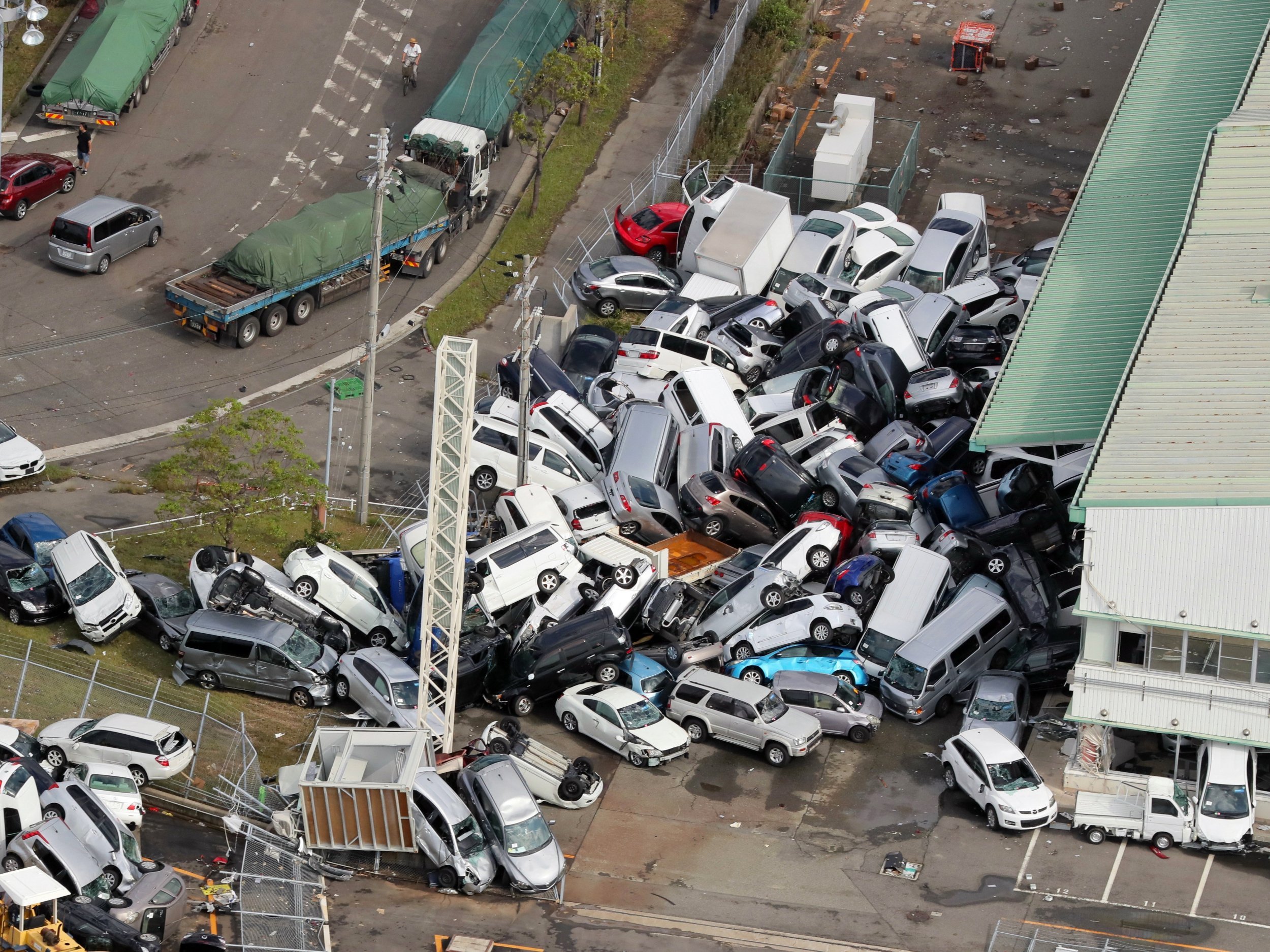One of Japan’s busiest airports remained closed indefinitely after the strongest typhoon to hit Japan in at least 25 years flooded a runway and other facilities while damaging other infrastructure and causing at least 11 deaths as it swept across part of Japan’s main island.
More than 400,000 households in western and central Japan were without power on Wednesday, a day after Typhoon Jebi struck with sustained winds of 160 kilometers per hour at landfall.
Japan’s national broadcaster NHK said the death toll had risen to 11, hundreds more injured, CBS reported.
A tanker that became unmoored by the typhoon’s pounding waves and wind slammed into a bridge linking offshore Kansai International Airport to the mainland, damaging the bridge and the ship and stranded 3,000 passengers overnight at the airport. Under sunny skies Wednesday morning, they left by boat or were transported by buses across an intact road on the damaged bridge.
The airport is built on two artificial islands in Osaka Bay, and the high seas flooded one of the runways, cargo storage and other facilities, said the Ministry of Land, Infrastructure, Transport and Tourism. One passenger was slightly injured by shards from a window shattered by the storm.
Airport officials could not say when the airport would resume operations. Flooding has largely subsided, but assessments were still being done on possible damage to equipment key to flight operations and repairs of the damaged bridge.
Impact on Economy
The airport is a gateway for Asian tourists visiting Osaka, Kyoto and Kobe. A closure of the only international airport serving one of Japan's key business and commercial areas has triggered concerns about its impact on Japan's tourism and economy.
The passengers who had been stranded overnight appeared relieved but exhausted and said they spent an uneasy night in the dark.
Hideko Senoo, a 51-year-old homemaker who was planning a family trip to India, said the terminal was hot and dark after losing power, and she could not even buy drinks at vending machines after food at convenience stores were all sold out.
"We could not use vending machines or access to wireless local network to get information, and we didn't even know about this boat service," she told Kyodo News.
Another passenger, Miki Yamada, a 25-year-old office worker planning a trip to Thailand with her friend, said she spent the night at an airport cafeteria, Kyodo said. "It was a rather scary night, as we were so isolated."
Factories in the region, including automaker Daihatsu Motor Co. and electronics giant Panasonic as well as major beverage maker Kirin Co., suspended production in Osaka and nearby prefectures on Tuesday, though most of them were expected to resume operation Wednesday, Kyodo News agency reported.
The Universal Studios Japan theme park in Osaka closed for a second day Wednesday but said in a news release it would reopen Thursday.
The deaths included a man in his 70s who was blown to the ground from his apartment in Osaka prefecture.
Police said five others died elsewhere in the prefecture after being hit by flying objects or falling from their apartments.
In nearby Shiga prefecture, a 71-year-old man died when a storage building collapsed on him, and a man in his 70s died after falling from a roof in Mie, officials said.
In nearby Nishinomiya in Hyogo prefecture, about 100 cars at a seaside dealership burned after their electrical systems were shorted out by sea water, fire officials and news reports said.


